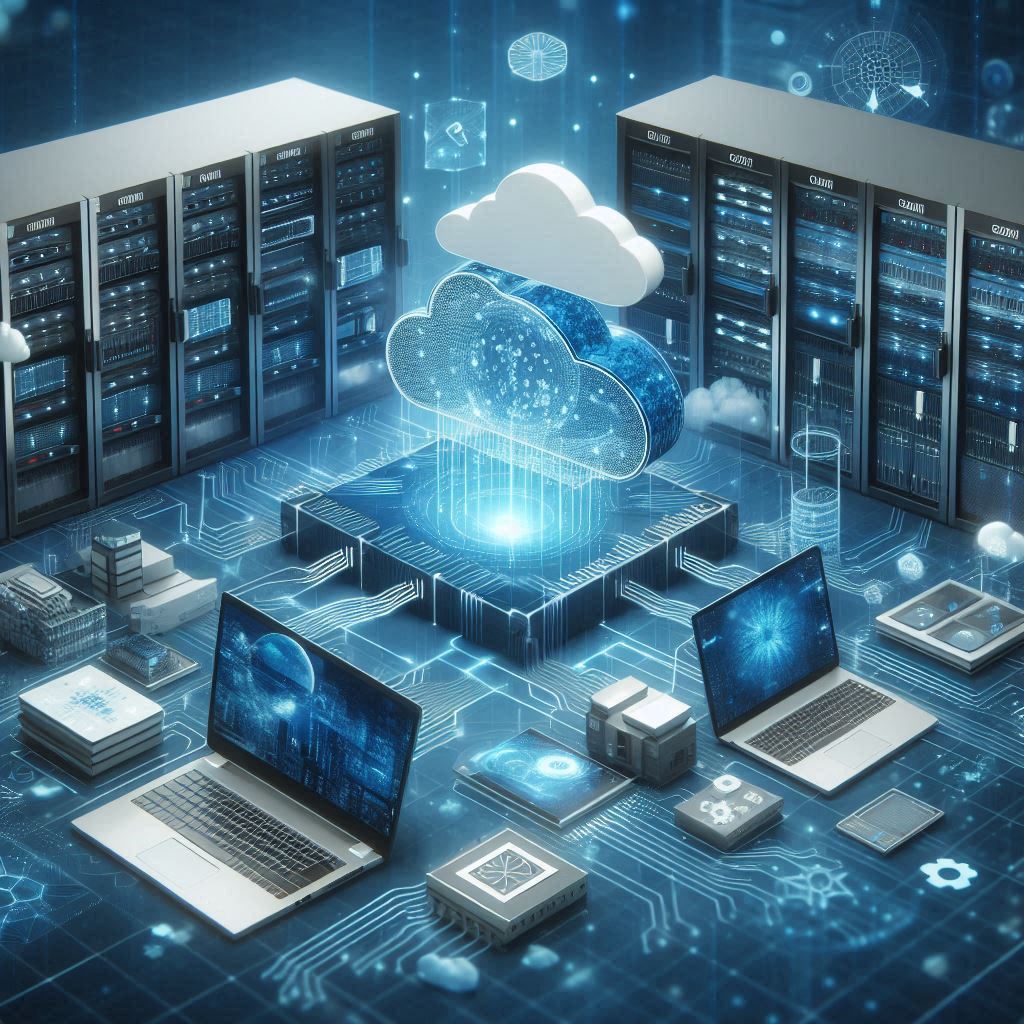How Do Data Center Solutions Support Cloud and Edge Computing?
 Adele Noble
Adele Noble
Think about all those apps you're using daily, social media, online shopping, video streaming, or even smart home devices. Do you ever wonder where all of the data goes? The answer lies in data centers. These massive storage hubs play a crucial role in managing, processing, and distributing data worldwide.
With the introduction of cloud and edge computing, data centers play an even greater role. In fact, the data center services market has grown rapidly in recent years and is projected to grow from $74.6 billion in 2024 to $84.23 billion in 2025, with a compound annual growth rate (CAGR) of 12.9%.
Cloud computing enables businesses and people to store and access information over the internet instead of on a single machine. Edge computing, on the other hand, processes data closer to the source, leading to reduced latency.
But how do data center support such technologies? Let's dive into seven key ways data centers support these technologies.
Providing Scalable Storage Solutions
Cloud computing needs extensive storage, and data centers provide that. The business can increase storage units without the need to purchase physical equipment or hardware.
Businesses do not have to buy additional servers as a precursor. The data center also offers flexible plans that increase with the need of a business. Users can access files anytime and anywhere through cloud platforms.
High Availability and Redundancy Data centers ensure your cloud applications remain online 24/7. They use backup systems and multiple power sources to keep data safe.
Supporting Edge Computing with Computing Power
Edge computing processes data at its source—close to that source. This may be a self-driving car or a smart factory. The edge servers that do this local processing have a home in data centres.
Doesn't need as much data sent to cloud servers on the other side of town. High-priority applications benefit from faster response times. Allows for real-time decision-making in healthcare, automation, and other areas.
Bandwidth Efficiency It generates internet traffic because it processes data locally. That makes for much faster operations at a lower cost.
Enhancing Security and Compliance
When you store data in the cloud, security is paramount. Data centers employ some of the most advanced security measures, including:
Firewalls and encryption for sensitive data Biometric access controls to deny unauthorized entry Compliance with regulations such as GDPR and HIPAA for the privacy of data
Disaster Recovery Plans When an unexpected event such as a power outage happens, data centers have backup solutions that will not allow the loss of data. This ensures continued operations in the cloud and edge.
The data center security market size has grown rapidly in recent years. It will grow from $13.57 billion in 2024 to $15.73 billion in 2025 at a compound annual growth rate (CAGR) of 16.0%.
Boosting Processing Speeds
Imagine streaming a video, but it keeps buffering. That happens when data processing takes too long. Data centers use high-performance servers to speed up processing for cloud and edge computing.
Cloud applications run smoothly with optimized servers. Edge computing benefits from local data centers for faster responses. Businesses experience minimal downtime and improved efficiency.
Load Balancing for Smooth Performance Data centers distribute traffic across multiple servers to avoid overload. This means fewer slowdowns and better user experiences.
Reducing Cost and Improve Efficiency
Running your own data center is expensive, with costs for hardware, maintenance, and electricity. Businesses can save money by using cloud services supported by data centers.
Cloud computing allows businesses to rent space and computing power from data centers instead of building and maintaining their own. Edge computing benefits from data centers in that it offloads heavy tasks to the cloud, reducing the need for each device to rely on powerful processors.
In addition, with shared models of computing resources, costs for a firm will go down but not sacrifice much on the high-performance or reliability scale.
Optimizing Latency for Real-Time Applications
Latency is the time it takes to process data. Data centers reduce latency by making cloud and edge systems work effectively.
Online gaming, video calls, and financial transactions take place quickly. Edge computing devices get insights into real-time data. Businesses can process transactions without disruptions.
Most smart devices depend on AI and IoT. Data centers enable these by processing large amounts of information in a matter of seconds.
Enabling Seamless Connectivity
Data centers bridge cloud and edge computing, maintaining connectivity continuously.
They consist of high-speed data access through the internet. Cloud applications depend on the former to function smoothly. The network infrastructure enables smooth communication between devices.
There are multiple data centers worldwide that can be accessed. This way, users can access services from anywhere without any kind of delay.
Wrapping Up
Data centers are the backbone of cloud and edge computing, providing fast and secure services that are scalable to modern technology. Data centers store data and process information while enhancing connectivity; thus, they make modern technology reliable and accessible.
Data centers keep running our digital world from online streaming to smart devices. Data centers will continue to shape the technology landscape as cloud and edge computing become more prevalent. It will all begin with a data center the next time you stream movies or use your smart device!
Subscribe to my newsletter
Read articles from Adele Noble directly inside your inbox. Subscribe to the newsletter, and don't miss out.
Written by

Adele Noble
Adele Noble
My name is Adele Noble. I have been doing content writing, professional blogging, and ghostwriting for more than 10 years. In these years, I have written content for tech magazines, thought leadership guides, and websites of international repute.